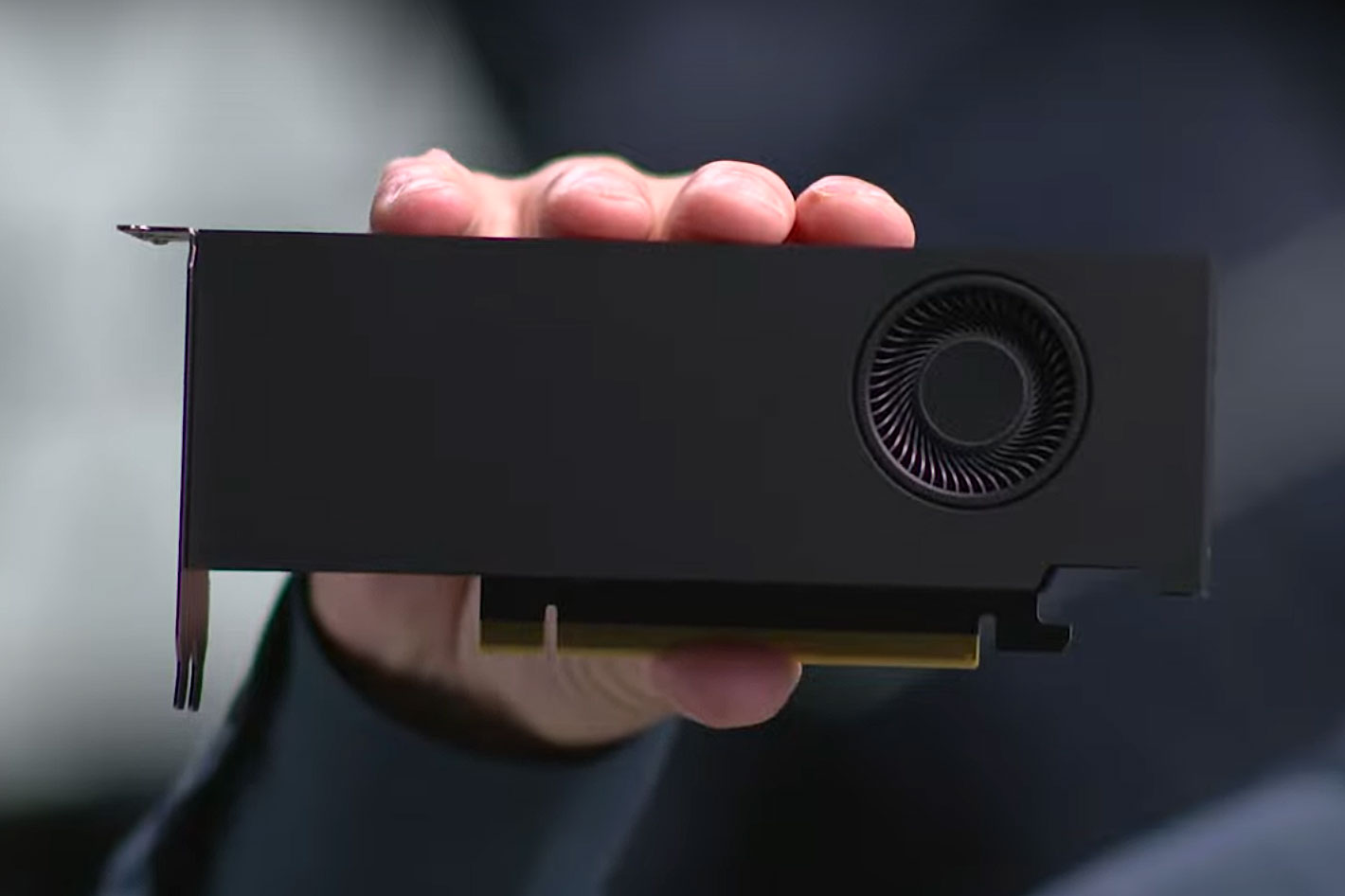
With its powerful real-time ray tracing and AI acceleration capabilities, NVIDIA RTX technology has transformed design and visualization workflows for the most complex tasks, like designing airplanes and automobiles, visual effects in movies and large-scale architectural design. Now NVIDIA introduces a new graphics card, RTX A2000, designed for everyday workflows, so professionals can develop photorealistic renderings, build physically accurate simulations and use AI-accelerated tools.
The NVIDIA RTX A2000 GPU is not just another graphics card added to the lineup, but NVIDIA’s most powerful low-profile, dual-slot GPU for professionals. The new desktop GPU encompasses all the latest RTX technologies in a compact form factor designed to fit a wide range of standard and small-form-factor workstations, so it becomes easier to access RTX from anywhere.
The NVIDIA RTX A2000 features the latest technologies in the NVIDIA Ampere architecture:
- Second-Generation RT Cores: Real-time ray tracing for all professional workflows. Up to 5x the rendering performance from the previous generation with RTX on.
- Third-Generation Tensor Cores: Available in the GPU architecture to enable AI-augmented tools and applications.
- CUDA Cores: Up to 2x the FP32 throughput of the previous generation for significant increases in graphics and compute workloads.
- Up to 6GB of GPU Memory: Supports ECC memory, the first time that NVIDIA has enabled ECC memory in its 2000 series GPUs, for error-free computing.
- PCIe Gen 4: Double the throughput with more than 40 percent bandwidth improvement from the previous generation for accelerating data paths in and out of the GPU.
With remote work part of the new normal, simultaneous collaboration with colleagues on projects across the globe is critical. NVIDIA RTX technology powers Omniverse, NVIDIA’s own collaboration and simulation platform that enables teams to iterate together on a single 3D design in real time while working across different software applications. The A2000 will serve as a portal into this world for millions of designers, says the company.
For on-the-go creators, the NVIDIA RTX A2000 laptop GPU — available in Studio laptops is the most power-efficient, professional RTX laptop GPU bringing ray tracing and AI capabilities to thin and light mobile workstations. The NVIDIA RTX A2000 desktop GPU will be available in workstations from manufacturers including ASUS, BOXX Technologies, Dell Technologies, HP and Lenovo as well as NVIDIA’s global distribution partners starting in October.
At the SIGGRAPH 2021 virtual conference NVIDIA also revealed new developments for its NVIDIA Omniverse. As part of that expansion the company announced that Blender, the world’s leading open-source 3D animation application, will include support for Pixar’s Universal Scene Description (USD) in the Blender 3.0 release, enabling artists to use the application with NVIDIA Omniverse production pipelines.
NVIDIA and Adobe are collaborating on a new Substance 3D plugin that will enable Substance Material support in Omniverse. With the plugin, materials created in Adobe Substance 3D or imported from the Substance 3D Asset Library can be adjusted directly in Omniverse, saving 3D artists valuable time.
A new Omniverse extension GANverse3D – Image2Car is being announced, making 3D modeling easier with AI. This was built on a generative adversarial network trained on 2D photos, synthesizing multiple views of thousands of objects to predict 3D geometry, texture and part segmentation labels.
NVIDIA also shared during SIGGRAPH 2021 news about exciting updates to cutting-edge creative apps shipped recently. The August Studio Driver, available August 10, sharpens support for all of them.
- Topaz Sharpen AI v3.2 offers refinements to AI models accelerated by RTX GPUs and Tensor Cores, adding 1.5x motion blur and Too Soft/Very Blurry features further reducing artifacts. In-app masking has also been improved with real-time processing of mask strokes and customization controls for the overlay display.
- Reallusion Character Creator v3.43, the first third-party app with Audio2Face integration, now allows artists to export characters from Character Creator to Omniverse as USD files with Audio2Face-compliant meshes. This allows facial and lip animations to be completely AI-driven solely from voice input, regardless of language, simplifying the process of animating a 3D character.
- Capture One 21 v14.3.0 adds a new Magic Brush tool to create complex masks for layer editing based on image content in a split second, working on an underlying processed image from the raw file. This process is hardware accelerated and is up to 3x faster when using the GPU compared to the CPU.
During the virtual NVIDIA SIGGRAPH presentation the company shared the special address Graphics, AI and the Emergence of Shared Worlds, and also debuted the documentary, Connecting in the Metaverse: The Making of the GTC Keynote.
